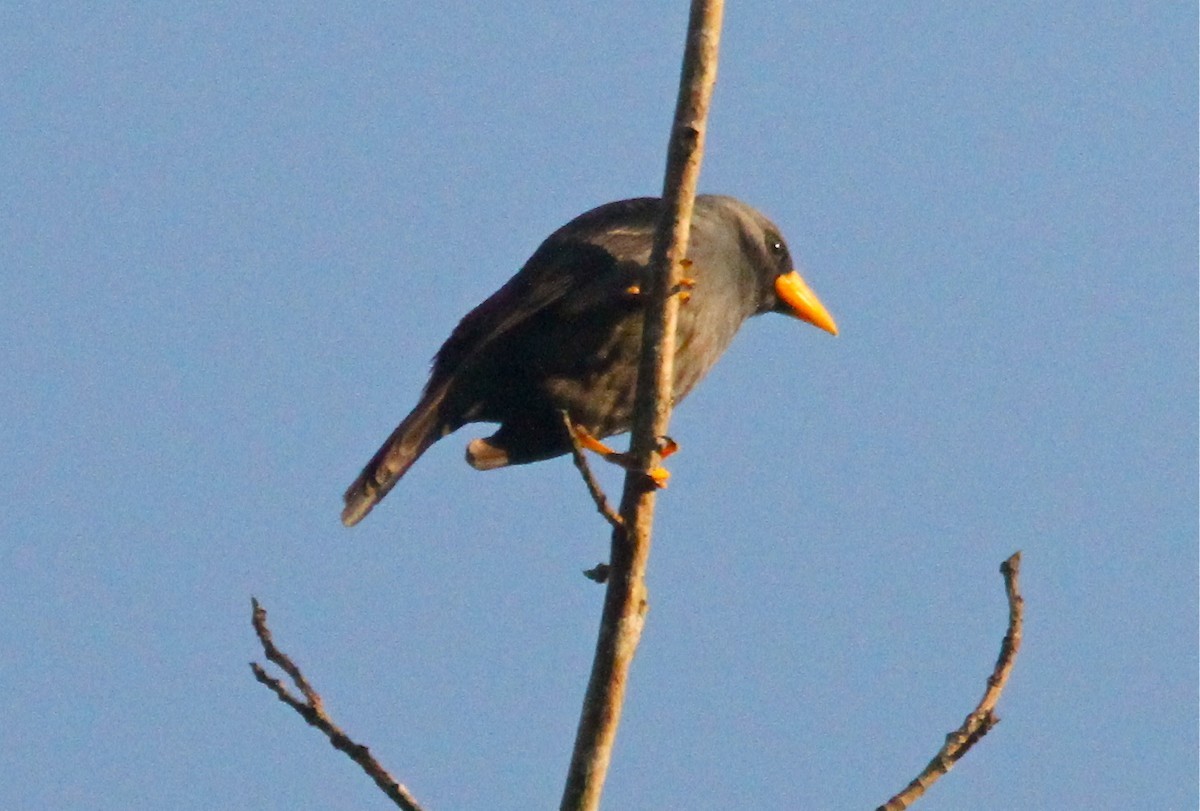Grosbeak Starling
A species of Myna, Also known as Scissor-billed Starling Scientific name : Scissirostrum dubium Genus : Myna
Grosbeak Starling, A species of Myna
Also known as:
Scissor-billed Starling
Botanical name: Scissirostrum dubium
Genus: Myna
Content
Description General Info
 Photo By Don Roberson
Photo By Don Roberson Description
The grosbeak starling (Scissirostrum dubium), also known as the grosbeak myna, finch-billed myna, or scissor-billed starling, is a species of starling in the family Sturnidae. It is monotypic in the genus Scissirostrum. It is endemic to Sulawesi, Indonesia. Its natural habitat is tropical lowland, and sometimes subtropical montane, lightly wooded forest areas and wetlands. This species nests in colonies, which frequently contain hundreds of pairs. Its nests are bored in rotting or dying tree trunks in woodpecker style. It eats fruit, insects, and grain. Grosbeak starlings are highly vocal, at their colonies and in feeding flocks. The grosbeak starling was first described by the English ornithologist John Latham in 1801 under the binomial name Lanius dubium. 
Size
20 cm
Nest Placement
Tree
Feeding Habits
Grosbeak Starling's diet consists of fruits like figs, Albizzia, bird's-eye chilli, seeds, insects, and nectar from Erythrina flowers. Preferring the upper canopy, grosbeak Starling rarely descends to ground for food or water. It exhibits highly social foraging in large flocks, sometimes with Aplonis minor.
Habitat
The grosbeak Starling typically resides in habitats that encompass forest edges and lightly wooded regions. It thrives in human-altered environments, often being spotted within plantations. While rarer in primary forests, it is notably missing from secondary forests. It favors areas from sea level to moderately high elevations, avoiding extreme altitudes.
Dite type
Granivorous
General Info
Feeding Habits
Bird food type

 Photo By Don Roberson
Photo By Don Roberson Scientific Classification
Phylum
Chordates Class
Birds Order
Perching birds Family
Starlings Genus
Myna Species
Grosbeak Starling